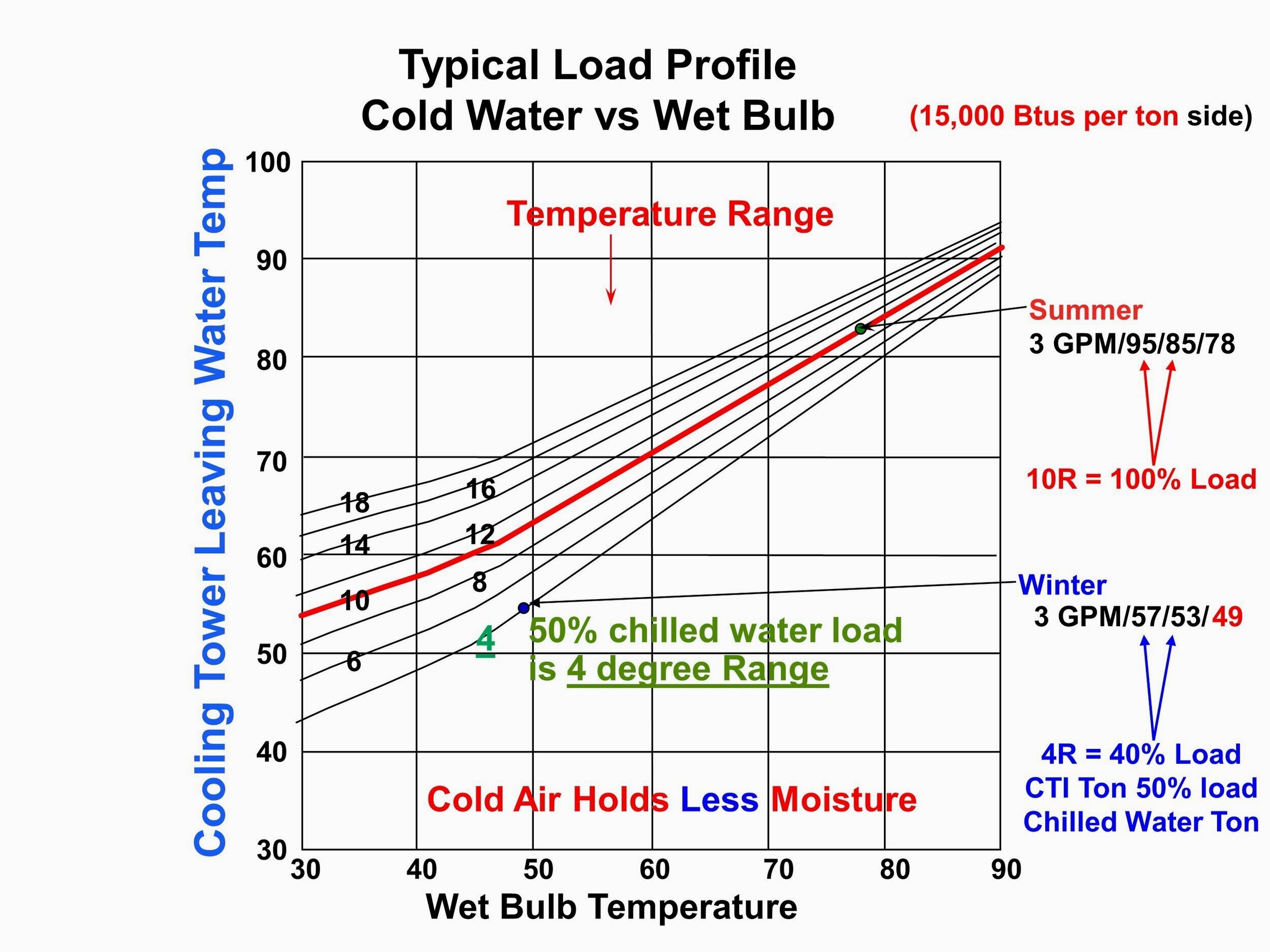How To Size A Waterside Economizer Part 2: A Cooling Tower In Winter
/By Chad Edmondson
Hold the phone; we’re about to blow your mind.
Did you know it can take a larger cooling tower to perform the same amount of cooling when it’s cold outside than when it’s hot?
Science can be counterintuitive like that. But think about it. How do cooling towers cool condenser water? By evaporating some of it. So if your thinking that those brief moments of exposure to the cold outside air is going to lower the cooling tower water temperature, think again. Cooling towers cool via evaporation and water simply doesn’t evaporate much when it’s cold outside. Remember – cold air holds less water! So when the wet bulb temperature drops outside, a cooling tower is kind of…. handicapped.
The chart below illustrates the degree to which cold air impacts the performance of a cooling tower:
Let’s say we have a cooling tower that was selected for peak summertime condition of 78°F wet bulb. Looking at the chart we see that we can cool the water from 95°F to 85°F running at 100% load and get a 7 degree approach. In other words, we can get within 7°F of the wet bulb temperature. Not bad!
But what happens in the winter when the wet bulb temperature drops to 50°F?
If we maintain 100% load on the cooling tower, the coldest water we can make is about 63°F. Now our approach has gone from 7 degrees to 13 degrees. The tower’s ability to cool water has almost been cut in half. And it worsens as the wet bulb drops. Remember, you judge the performance of the tower based on the approach. But as you can see, approach increases as the wet bulb goes down.
That makes things a little challenging when trying to meet ASHRAE’s latest guidelines which say you should be economizing whenever the outdoor temperature is 50°F dry bulb/45°F wet bulb or below. What are you supposed to do? Select your cooling tower based on the coldest days of the year instead of the hottest days of summer? That’s one way, albeit not very practical.
Consider a cross flow tower selected for 79°F wet bulb, with 95°F water going to the cooling tower and leaving at 85°F. That’s a 10 degree range and a 6 degree approach. What happens if we wanted to operate that same cooling tower in the winter with 60°F entering water and maintain a 10 degree range? The wet bulb would have to be 31.85°F and our approach would be 18.18 degrees! Practically speaking, how often is that going to happen? Not very often, so your opportunities for free cooling/economizing during the winter would be drastically reduced.
That is why we tend to advocate sizing the tower for peak summer hours as is traditionally done but operating the tower at part load during colder conditions so that the chiller and the tower/economizer can work together to maintain system supply temperatures, while still maintaining a reasonable approach. This approach involves piping one or more cooling towers in series with the economizer. Stay tuned for more that!




